From Oldest.org
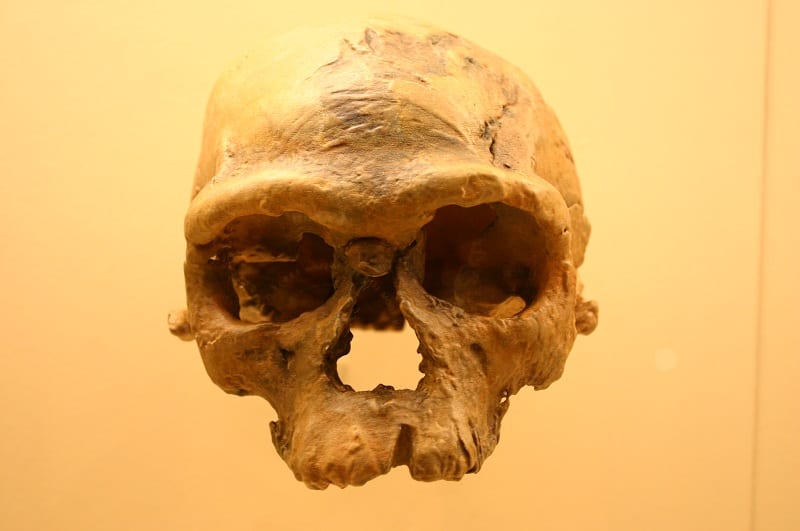
Age: over 300,000 years old
Country of Origin: Morocco
Year Discovered: 1960
“The skulls found at the Jebel Irhoud archaeological site in Morocco are believed to be the oldest-known human remains. The first skull was discovered in 1960 by a miner, who gave it to an engineer as a souvenir. The engineer eventually turned the skull over to the University of Rabat and an official expedition to the site took place in 1961.
Since then, several more skulls and other bones have been uncovered. Researchers initially thought the skulls belonged to Neanderthals, but have since determined that they belong to an archaic form of Homo sapiens. The age of the skulls is estimated to be over 300,000 years old. This information challenges the previous idea that modern humans emerged from Eastern Africa around 200,000 years ago. Researchers now believe that modern humans were spread across the continent around 330,000 ? 300,000 years ago. “
image from Wikimedia Commons
text from http://www.oldest.org

Age: disputed ? between 209,000 ? 260,000
Country of Origin: China
Year Discovered: 1978
“The discovery of a skull from China ? dubbed the Dali Man ? has challenged long-held beliefs about the evolution and dispersal of Homo sapiens. While most scientists believe that humans originated from African ancestors, the similarities of the Dali Man skull to the earliest human remains in Africa, suggests that not all modern humans came from Africa.
When the skull was first discovered in 1978, archaeologists believed it belonged to a different hominin species Homo erectus. For years after the discovery of the Dali Man, scientists believed that Homo erectus shared DNA with Homo sapiens. However, a newer analysis says that the Dali skull is incredibly similar to two Homo sapiens skulls found in Morocco. Further research into the skulls? similarities may end up rewriting the origins of mankind. “
image from The Daily Mail
text from http://www.oldest.org
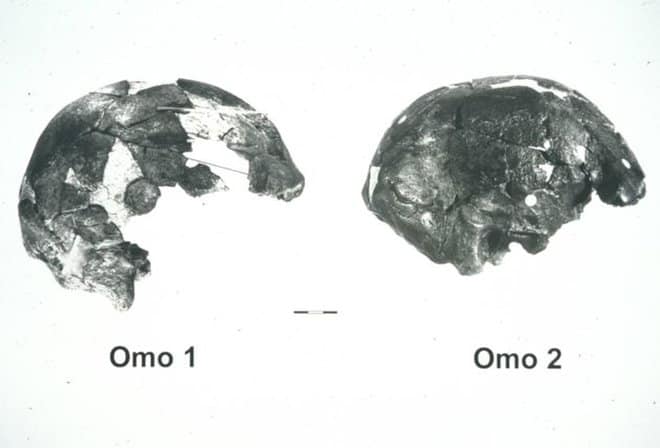
Age: 195,000 years old
Country of Origin: Ethiopia
Year Discovered: 1967
“Before new research was released in 2017, the human remains found at Omo Kibish in Ethiopia were believed to be the oldest-known Homo sapiens remains ever found. The Omo Kibish skullcaps are the reason why most scientists believed that early modern humans originated from East Africa. While they are no longer the oldest remains, the skullcaps help paint a more complete picture of early human history.
When the skulls were first discovered in 1967 scientists thought that they were no older than 160,000 years. This research was updated in 2005 and moved the skulls back to 195,000 years old. Although the skulls ? labeled Omo I and Omo II ? are closely related, Omo II is more primitive. This suggests that there were Homo sapiens in the area that were less modern. “
image from Live Science
text from http://www.oldest.org
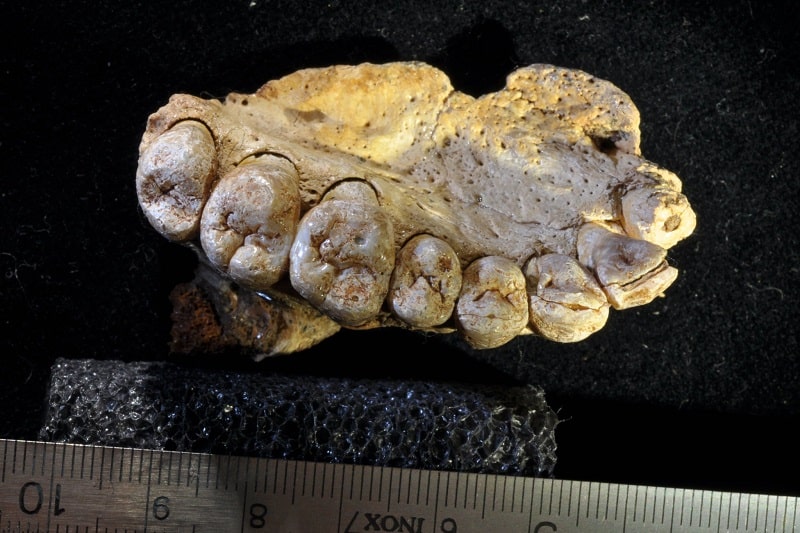
Age: 177,000 ? 194,000 years old
Country of Origin: Israel
Year Discovered: 2014
” In 2018, a jawbone that had originally been dated to 150,000 years ago was re-analyzed and estimated to be between 177,000 ? 194,000 years old. When the new report was published scientists were calling the jawbone the oldest-known Homo sapiens remains outside Africa. The new research suggests that modern humans left Africa much earlier than previously thoughts. Earlier discoveries in Israel led scientists to believe that humans started migrating from Africa between 90,000 ? 120,000 years ago.
The excavated upper jawbone consists of seven intact teeth and one broken incisor. Scientists believe that the teeth bear Homo sapiens traits and do not resemble the teeth of any other human relatives from the time period.”
image from The New York Times
text from http://www.oldest.org
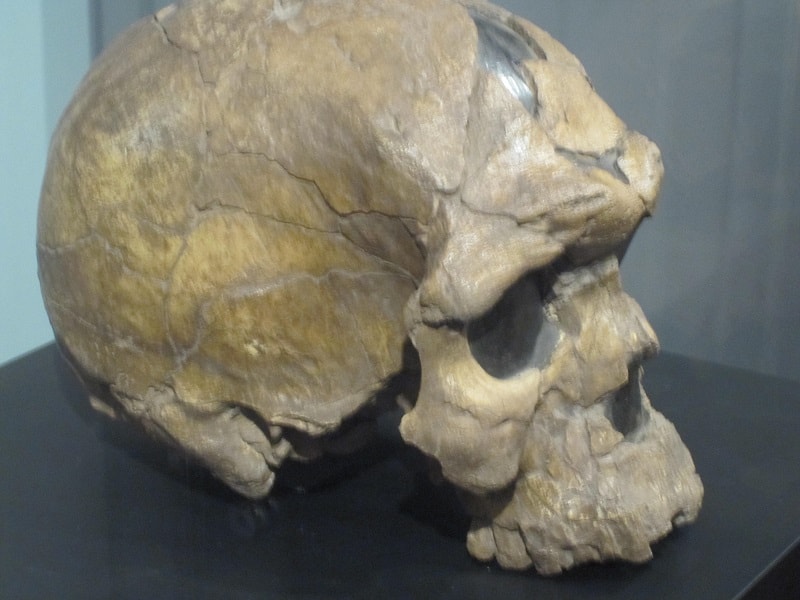
Age: about 160,000 years old
Country of Origin: Ethiopia
Year Discovered: 1997
“The Herto Man, which was discovered in 1997, is considered a human subspecies called Homo sapiens idaltu. After six years of research, scientists released a report in 2003 saying that Herto Man skulls were the oldest-known human remains yet found. The skull is estimated to be about 160,000 years old and confirmed the old theory that modern humans evolved in Africa.
Scientists were able to piece together tree skulls from the remains ? two belong to adult males and the other one to a six or seven year old child. Most of Homo sapiens idaltu?s features are similar to ours, except they had remarkably large heads. According to scientists, their large skulls suggest that they were ?very, very large robust people.”
image from Wikimedia Commons
text from http://www.oldest.org
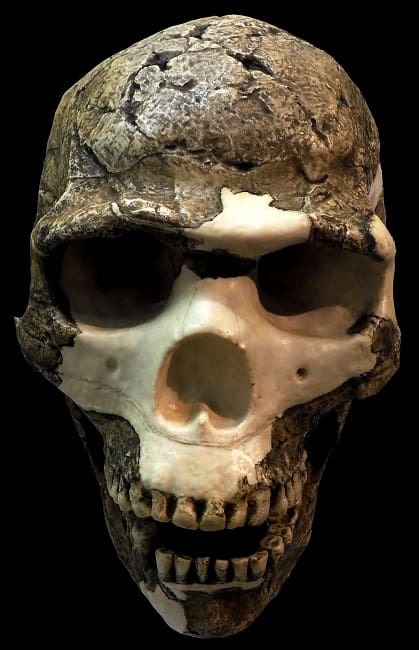
Age: 80,000 ? 120,000 years old
Country of Origin: Israel
Year Discovered: 1929 ? 1935
“The remains found at the Qafzeh and Es Skhul caves in Israel between 1929 ? 1935, were initially thought to belong to a hominin species that was a ?missing link? between Neanderthals and modern humans. Archaeologists initially believed that the Skuhl-Qafzeh people had evolved from the Neanderthals, whose remains were found in nearby caves. However, new researcher shows that the Skuhl-Qafzeh were a group of ancient modern humans and the nearby Neanderthals had come after them.
Newer theories about the Skuhl-Qafzeh people suggest that they were one of the rare early failures of Homo sapiens. About 75,000 years ago when the Homo sapiens of Skhul and Qafzeh disappear from the fossil record, the climate in the area got colder. Neanderthals were better suited for the cold than early humans, which explains why the Neanderthal remains found in nearby caves are much younger than the Skuhl-Qafzeh remains. “
image from Wikimedia Commons
text from http://www.oldest.org

Age: 46,000 ? 63,000 years old
Country of Origin: Laos
Year Discovered: 2009 and 2010
“The skull fragments found in 2009 at the Tam Pa Ling cave in Laos are the oldest modern human remains found in Southeast Asia. The skull was identified as belonging to a modern human with distinct Sub-Saharan African features. Two jawbone fragments were also found at the site and have both archaic human and modern human traits.
The discovery of the specimens was significant because it filled in a 60,000 year gap in the human fossil record. It shows that modern humans were in Southeast Asia since at least 60,000 years ago and brings scientists one step closing to figuring out when humans spread from Africa into Asia. “
image from Wikimedia Commons
text from http://www.oldest.org
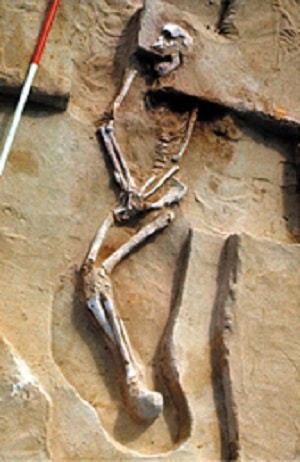
Age: 40,000 ? 60,000 years old
Country of Origin: Australia
Year Discovered: 1974
“The Lake Mungo remains from Australia, which are known as Mungo Man and Mungo Woman, are the oldest human remains ever found in Australia. The Mungo Woman?s remains were found first in 1967 ? she had been cremated her remains were found buried in a small pit. Her remains are dated to 42,000 years ago, making it the world?s oldest cremation.
The Mungo Man was found a few years later, only a few meters away from where the Mungo Woman had been found. The remains are a mostly complete skeleton of a man who was carefully buried and and adorned with red ochre. Since the Mungo Man was discovered in 1974, he has been at the Australian National University in Canberra. However, in 2014 leading up to the 40th anniversary of his discovery, the aboriginal people of Willandra Lakes formally requested return and repatriation of the remains. The body was finally returned in November 2017 and his remains were buried directly in the earth in a casket of ancient red gum. “
image from Wikimedia Commons via James Maurice Bowler
Image from Wikimedia Commons via James Maurice Bowler
text from http://www.oldest.org
